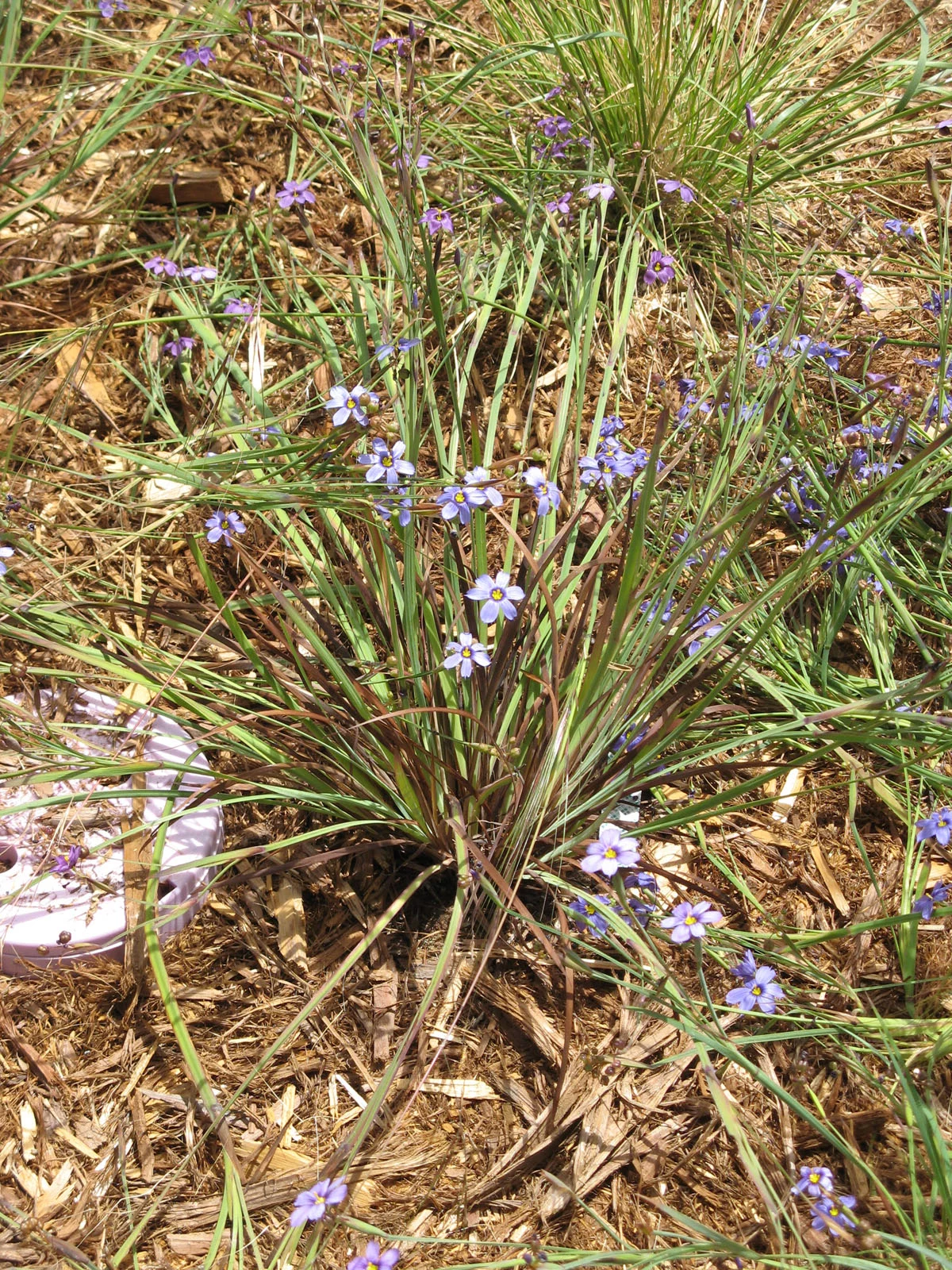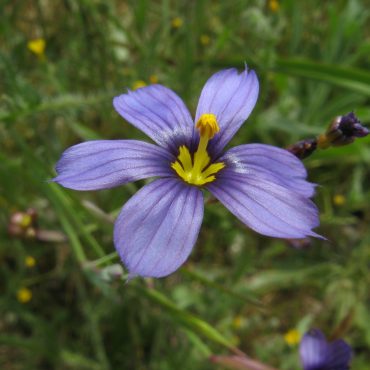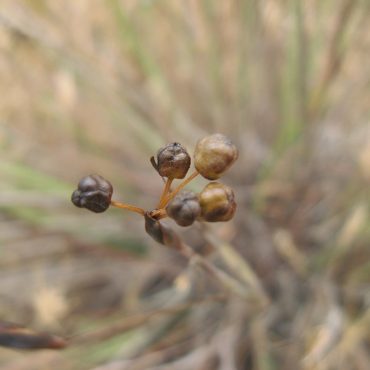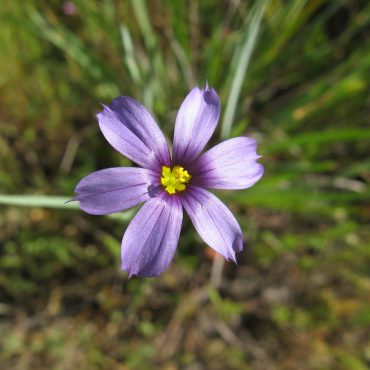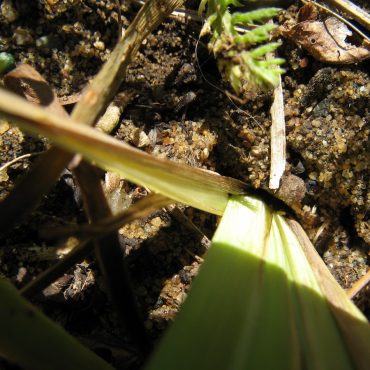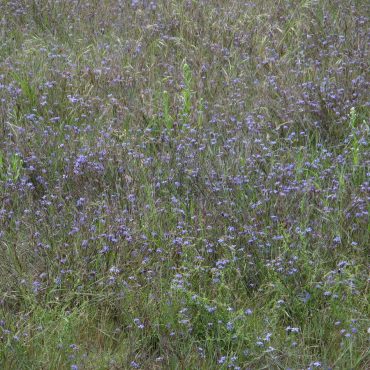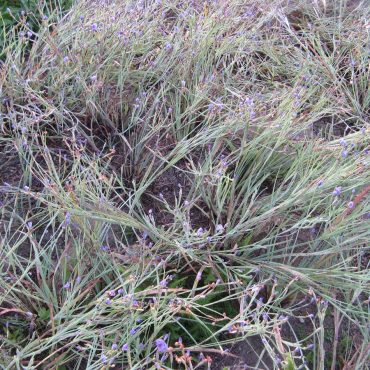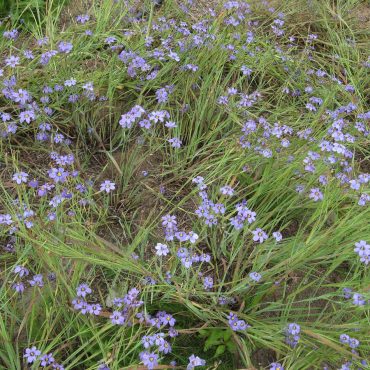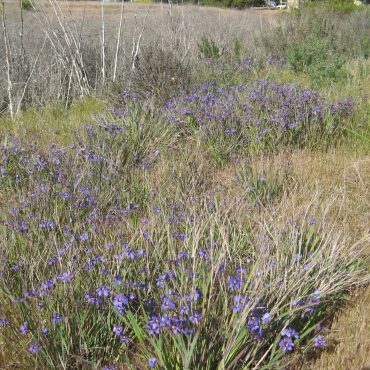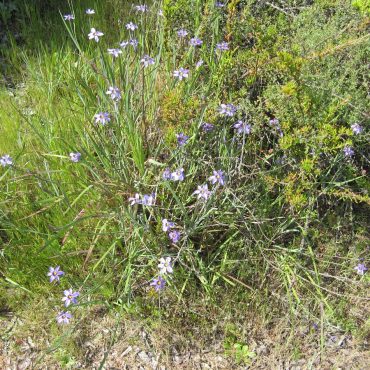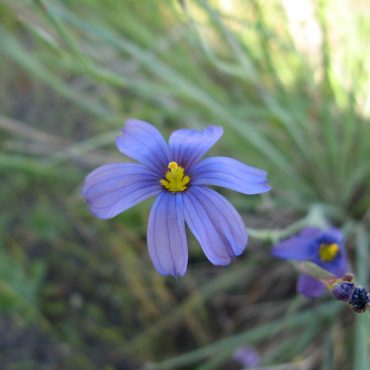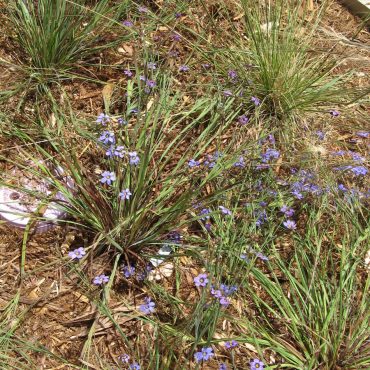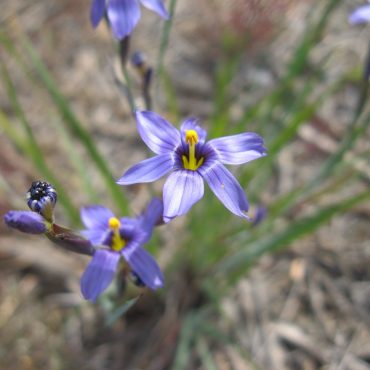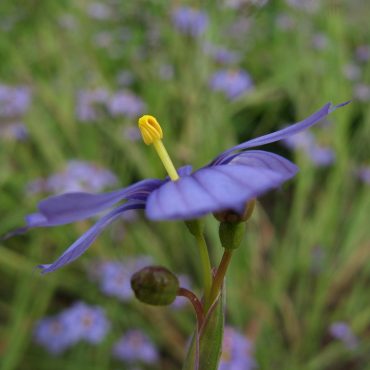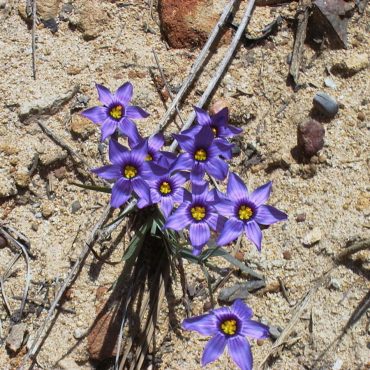Blue-eyed grass (Sisyrinchium bellum) is not a grass but an iris, native to California, western Oregon and northwestern Mexico. It is the only native iris in the Reserve. Unlike the showy garden iris, blue-eyed grass has a delicate flower with sepals and petals that look alike and that form a shallow, sometimes inverted saucer around the stamens and pistil. At the base of each blue petal is a bright yellow, fringed shape; together these form a yellow spot at the center of the flower. Blue-eyed grass might be better named “yellow-eyed non-grass.”
Blue-eyed grass is a popular plant in native plant gardens. In spring, it blooms cheerfully in the roof garden at the Nature Center as well as along the trails in East Basin.

